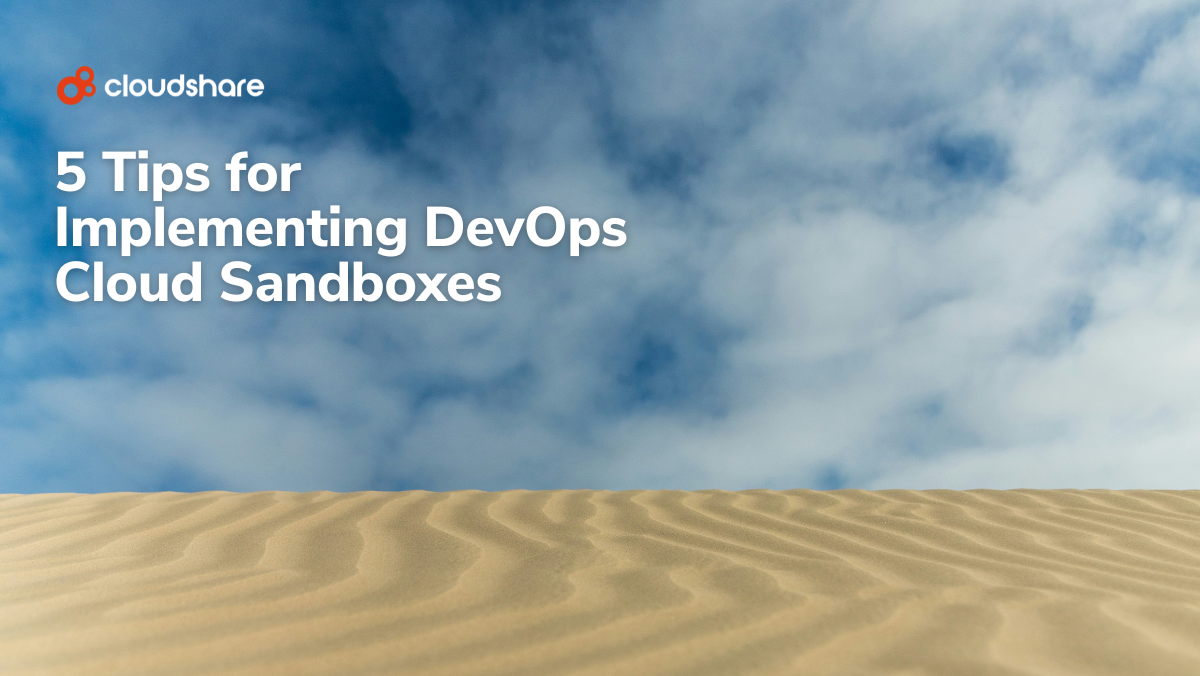
For software-as-a-service (SaaS) companies, quality assurance is everything. If you’re looking to successfully bring your software to market, you need to put every working part of that software under the microscope. While you might not catch every bug and glitch, you’ll at least ensure that your software’s got a baseline level of functionality.
There’s a few ways you can go about doing this, but creating a sandboxed software testing environment is arguably the most effective.
Also known as a sandbox environment or test-environment-as-a-service, a sandbox software testing environment a cloud-based simulation that lets you perform a full assessment of your software and make the necessary adjustments to ensure it’s both functional and usable. Ultimately, this ensures that your customers receive the best product or service possible — and that you don’t release a broken product onto the market.
What is a Testing Environment?
A software testing environment is any space in which a piece of software undergoes a trial run. It is an important part of the development process for the creators and can be used to identify bugs and errors which might impact a product’s functioning. It also allows developers to assess the quality of a product and think about the end result for the user.
To ensure that bugs or errors can be fixed prior to the production stage, it’s important for this environment to be as close to a live environment as possible. That means simulating not only the software itself, but any other applications, platforms, and technologies with which the software might interact. That way, developers can analyze the software from various standpoints, including security, performance, user experience, and ease of use.
What are the Benefits of Using a Test Environment as a Service?
It’s pretty obvious why you’d want to fully test your software prior to going into production. Bug detection aside, testing also helps you identify potential usability issues or missing features. But why use a sandboxed environment specifically?
Let’s go over a few key benefits.
More Cost-Effective and Time-Efficient
Using a virtual environment platform for testing software saves on both time and cost. The earlier a bug or error is identified, the sooner it can be fixed, saving time for development teams. With new technologies, performing these tests in-house has become inefficient and costly. The commitment to building and maintaining a test environment is one that most organizations cannot afford, especially since many development teams will only use the environment occasionally. Opting for a test environment as a service is a cost-saving alternative to building or leasing in-house systems.
A Shorter Time-To-Market
A test environment as a service fast-tracks the development process. It speeds up testing initiatives, removing the need for testing environments to be built on company premises. It can be set up quickly, ensuring that bugs and errors are detected and acted upon swiftly, during various stages of the development process. Ultimately, your product or service should reach the market faster.
Usable Throughout the Development Lifecycle
A test environment as a service can be used at any and all stages of the software development lifecycle. This includes functionality testing, performance testing, and security testing. The facets of a software product are complex—there’s a lot that needs to be taken into consideration—and so an ongoing process of testing and refinement ensures that each part of the development lifecycle is paid due diligence.
Early Detection of Potential Problems
There’s a lot that can go wrong during software development. And that translates to a laundry list of issues that can have a negative impact on the customer experience. Persistent bugs, missing features, and consistent outages could easily serve as a death knell for your software, creating a negative user experience that inevitably results in plummeting customer retention, loyalty, and advocacy rates.
In the best-case scenario, this can mess with your return on investment and overall revenue generation. In the worst-case scenario, it could be detrimental to your entire brand. By using a virtual environment throughout software development, you can flag issues early and mitigate the chance that anything too glaring will make it to the customer.
Better Product Quality
As we suggested earlier, a cloud-based development environment can help you do more than identify issues with your software. You can also leverage your sandbox as a springboard for new ideas, value-adds, feature improvements, and better, more user-friendly designs. That’s because your developers have the ability to play around with the software as they build it, pushing it to its limits and engaging in a way that wouldn’t necessarily be possible with a traditional development approach.
This, in turn, gives your developers a fresh angle on the software and equips them to refine its features before going to market.
How Do I Find The Right Testing Environment?
Before you roll out any piece of software, you’ll want to ensure that it’s functional, secure, well designed, and user-friendly. While you could certainly do so by implementing in-house testing systems, that isn’t exactly feasible for many organizations as you may lack the internal resources and technical expertise to do this effectively. At the same time, choosing the wrong sandbox can leave you in a worse spot than if you’d never deployed anything at all.
So…how do you make the right choice, then?
Easy: By working with CloudShare.CloudShare’s testing environments enable users to spin up exact environment replicas, ensuring that products can be tested “live”. There is no wait for labs to free up—organizations can scale with as many labs as they need. CloudShare enables multiple teams to work in parallel, speeding up the development process and ensuring that your products get to market faster.
Learn More About Sandboxes and Virtual Labs
You’ve now got an understanding of what’s involved in using a test-environment-as-a-service for software development. But development isn’t the only use case for a sandbox. If you’re interested in learning more, we suggest reading about the difference between a sandbox and developer environment.And if you want to know about the technology behind both, check out Virtual Training Labs vs. Simulations: Key Differences & More.
This blog was published in March 2022 and updated in September 2024.




